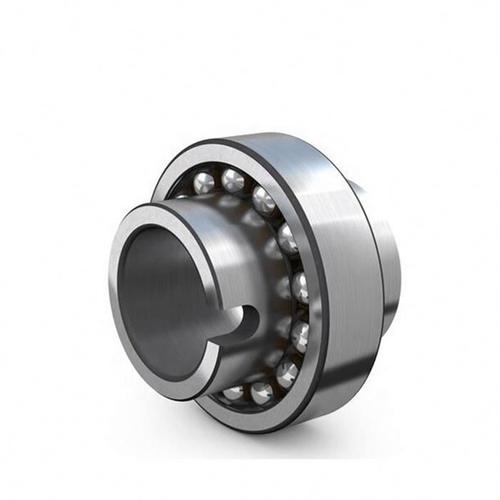Top Industrial Applications of Ball Bearings: Key Uses and Benefits
Ball bearings are precision-engineered components designed to reduce rotational friction while handling radial and axial loads. Their versatility makes them indispensable in countless industrial sectors, from automotive manufacturing to aerospace engineering. By enabling smooth motion with minimal energy loss, these mechanical marvels significantly enhance equipment efficiency and longevity in demanding environments.
1、ball bearings in automotive industry2、ball bearing types for heavy machinery
3、benefits of ceramic ball bearings
4、ball bearings in aerospace applications
5、how to maintain industrial ball bearings
1、ball bearings in automotive industry

Modern vehicles utilize ball bearings in over 50 critical components, from wheel hubs to transmission systems. Automotive bearings must withstand extreme temperatures ranging from -40°C to 150°C while maintaining precision under constant vibration. High-performance variants like tapered roller bearings support wheel rotation at highway speeds, reducing friction by up to 30% compared to plain bearings. Electric vehicles particularly benefit from specialized bearings that handle increased torque demands while suppressing electromagnetic interference. Leading manufacturers now incorporate sensor-equipped smart bearings that monitor load distribution and wear patterns in real-time, significantly improving predictive maintenance capabilities.
2、ball bearing types for heavy machinery
Heavy industrial equipment requires specialized bearing solutions to manage exceptional loads. Spherical roller bearings excel in mining equipment, accommodating misalignment while supporting axial loads up to 20% of radial capacity. Cylindrical roller bearings dominate steel mill applications, with their high radial load capacity handling forces exceeding 500kN. For extreme environments, stainless steel bearings with advanced sealing systems prevent contamination in chemical processing plants. Recent developments include hybrid bearings combining steel races with ceramic balls, achieving 60% longer service life in high-temperature kiln applications. Proper bearing selection can reduce energy consumption in heavy machinery by 15-25%, making it crucial for sustainable operations.
3、benefits of ceramic ball bearings
Ceramic hybrid bearings revolutionize industrial applications through exceptional material properties. Silicon nitride balls demonstrate 50% lower density than steel, reducing centrifugal forces in high-speed spindles reaching 50,000 RPM. Their non-conductive nature eliminates electrical arcing in generators, while inherent corrosion resistance extends service life in marine environments by 300%. Food processing plants benefit from ceramic's non-porous surface that resists bacterial growth, maintaining hygiene standards. Despite higher initial costs, these bearings offer 400% longer lifespan in aggressive chemical environments, delivering superior ROI. Thermal stability allows consistent performance in temperature fluctuations from -200°C to 800°C, ideal for cryogenic and furnace applications.
4、ball bearings in aerospace applications
Aerospace bearings operate under extraordinary conditions, requiring precision measured in millionths of an inch. Jet engine main shaft bearings must sustain 20,000 RPM while withstanding temperatures exceeding 300°C. Advanced vacuum-grade lubrication systems prevent outgassing in space applications, crucial for satellite components. Magnetic bearings in flywheel energy storage systems achieve 99.995% efficiency through contactless rotation. NASA's recent Mars rovers utilize specially coated bearings that function in -120°C nights and dust-laden atmospheres. Strict certification processes ensure aerospace bearings meet MIL-STD-810 standards, with failure rates below 0.0001% per operating hour during critical flight phases.
5、how to maintain industrial ball bearings
Proper maintenance extends bearing life by 300-500%. Implement vibration analysis using ISO 10816 standards to detect early wear patterns. Ultrasonic monitoring identifies lubrication deficiencies before heat generation occurs. For electric motors, measure shaft voltage to prevent electrical erosion in bearings. Relubrication intervals should follow OEM specifications, typically every 2,000-8,000 operating hours. Use automated grease systems to maintain 25-35% cavity fill ratio. When handling bearings, maintain ISO Class 7 cleanroom standards to prevent particulate contamination. Storage conditions require 40-60% humidity control with temperatures between 10°C-25°C. Advanced practices include laser alignment ensuring ≤0.05mm shaft misalignment and infrared thermography detecting abnormal heat patterns.
From precision automotive systems to extreme aerospace environments, ball bearings prove indispensable across industries. Understanding specific applications from heavy machinery requirements to ceramic advantages helps optimize equipment performance. Proper maintenance techniques not only extend component life but significantly reduce operational costs. Whether selecting bearings for high-speed robotics or corrosive chemical processing, informed choices based on technical specifications ensure maximum efficiency and reliability in any industrial setting.
This comprehensive guide has explored critical aspects of ball bearing applications, from automotive innovations to aerospace breakthroughs. We've examined specialized types for heavy machinery, revealed ceramic bearing advantages, and detailed essential maintenance protocols. These insights empower engineers and procurement specialists to make data-driven decisions, ensuring optimal bearing performance across diverse industrial applications while achieving substantial cost savings through improved equipment longevity.




 13869596835
13869596835